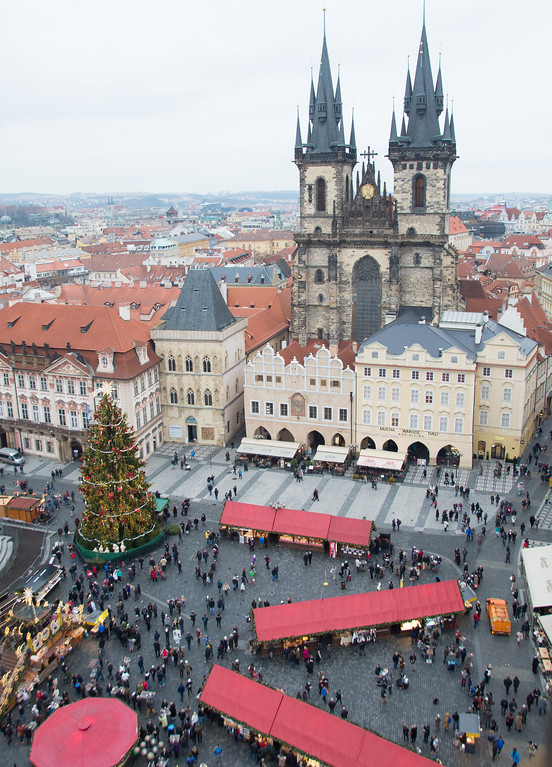
View of Old Town Prague’s Christmas Market as seen from Old Town Hall Tower
My mother used to claim that I inherited my wanderlust from her late father, a civil and mining engineer who worked and traveled throughout Latin America. If he was to blame for my “itchy feet,” that unceasing desire to roam the globe, then she bore responsibility for my passion for European Christmas markets. As a kid, I spent countless Saturdays following her through crowded church Christmas bazaars. Which faith sponsored the event never mattered. As long as it featured homemade pizzelles, kolaches, stollen or fruitcake, we’d be there.
A curious kid, I wondered how my hometown’s holiday bazaars stacked up against those in people’s homelands. If I visited Germany’s Striezelmarkt, would ladies jostle and push for the last few loaves of nut-studded stollen? If I went to Poland, would people nibble on onion- and potato-filled pierogis as they shopped? What did people eat at European Christmas markets? For that matter, did they even have these seasonal fairs?
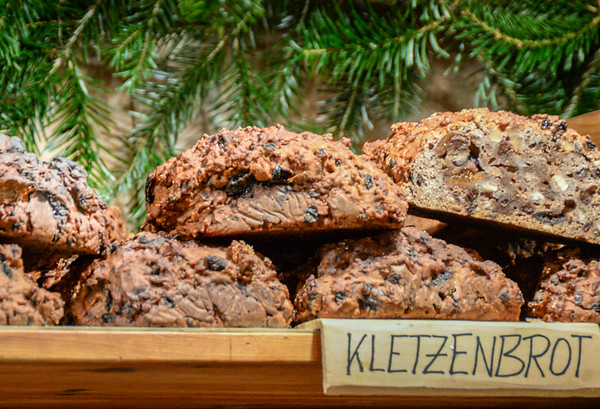
It’s everyone’s favorite, “fruit loaf!”
Turns out that Europe is chocked full of cheery, outdoor, holiday markets. Along with decorations, crafts and jewelry, they invariably have at least one stall dedicated to traditional Advent pastries and breads. Dresden, Germany goes so far as to hold a parade and slicing ceremony in honor of its signature bread, stollen. While most cities don’t go to this extent, all feature fruit-, nut- and spice-laced baked goods.
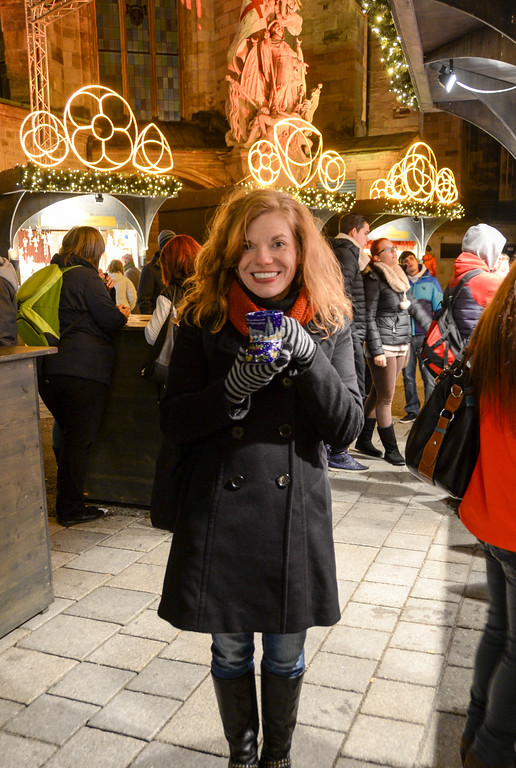
Drinking mulled wine from a ceramic boot at Vienna, Austria’s Stephensplatz Christmas market
While I only remember hot chocolate, coffee and apple cider at those church bazaars, European Christmas markets feature a far more festive drink, mulled wine. Depending on what country you visit, look for glühwein (Germanic language countries), vin chaud (French-speaking lands), glogg (Nordic regions) or jolly groups of shoppers sipping from steaming ceramic mugs. It’s a great way to warm up on a blustery day or night!
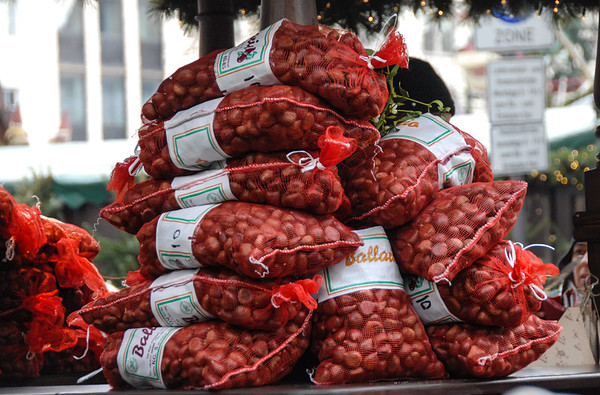
Chestnuts waiting to be roasted in Cologne, Germany
Before a December trip to France I had always thought of chestnuts and “chestnuts roasting on an open fire” as the stuff of romantic tales. Boy, was I ever wrong. Nothing says “winter in Europe” like the sweet, smoky smell of roasted chestnuts. No matter where you go in Europe, you can wander into a town square and find chestnuts cooking in a pan over an open flame.
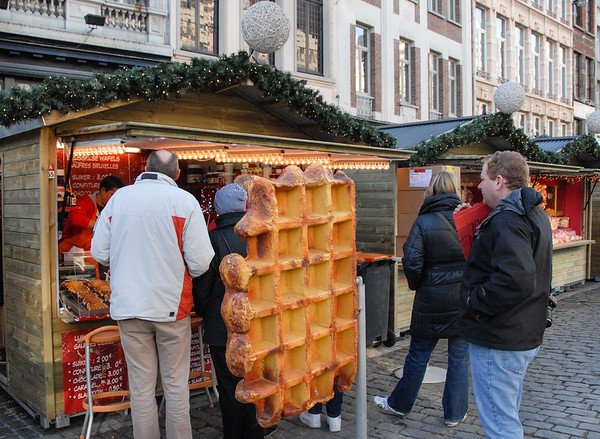
Waiting for fresh, hot Belgian waffles, Liege-style, in Antwerp, Belgium
High on my list of market treats is a fresh, hot Belgian waffle. Firmer, sweeter and more substantial than an American-style waffle, it comes in two varieties, Brussels and Liege. I’m partial to the denser Liege but you will usually find both on offer. To fully enjoy the flavor, skip the ice cream and sauces and order it with just a sprinkling of sugar on top.
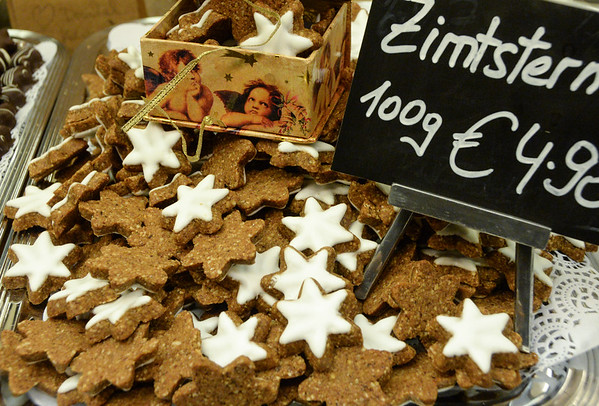
Austrian cinnamon stars , or zimtsterne, in Vienna
A jewel box of a city, Vienna, Austria sparkles at Christmastime. The twinkling lights, the elegant architecture, the cinnamon stars. Yes, cinnamon stars. A holiday specialty, these small, iced cookies consist of ground almonds, cinnamon, egg whites and the German cherry liqueur kirsch. Delicious to eat straight from the bag, they can also be boxed and given as gifts during the holiday season.
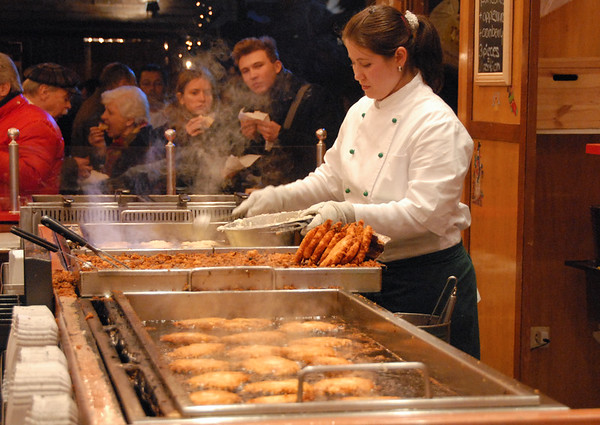
Frying up potato pancakes in Berlin, Germany
For those rare times when I’ve had my fill of cookies, waffles, chestnuts, candy and drinks, I might order German potato pancakes or Czech potato spirals. Granted, they’re fried in hot oil but it’s the holidays and I’ve already consumed half my weight in sweets. I might as well indulge a little more. As for that other Western Pennsylvania favorite pierogis, while I didn’t come across them in the Czech Republic, I may encounter them in Poland later this month. I’ll keep you posted.
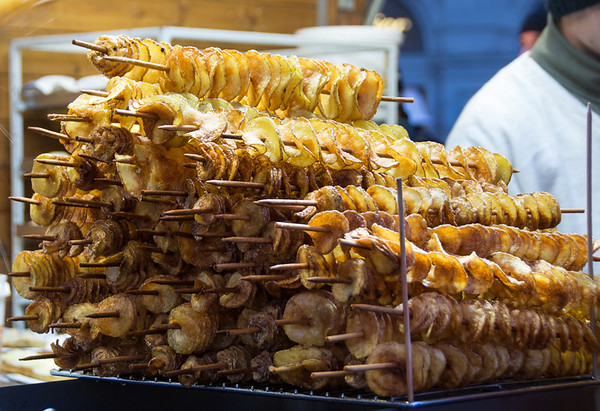
Potato spirals in Prague, Czech Republic
8 Comments